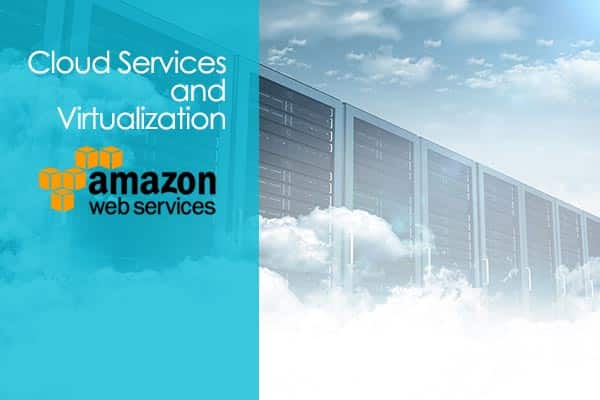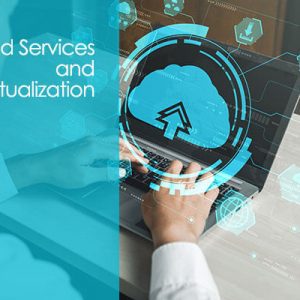28 Training Hours
220 Videos
24 Topics
152 Practice Questions
As the cloud computing industry continues to grow, understanding its concepts, purpose, and use cases will become an increasingly valuable skill among non-IT individuals.
This will help marketing, sales, and finance professionals to better interact with developers and other IT professionals engaged in Amazon web services projects.
This course provides an overview of some of Amazon web services cloud services and basic knowledge of what the services are for the specified objectives. This will go over some of Amazon web services more established services and the ancillary services that allow businesses to incorporate or completely migrate over to Amazon web services.
Amazon web services provide a number of tools to perform basic tasks up to full automation. We will then discuss the management of AWS cloud services and provide basic knowledge of services provided by the AWS cloud. We will talk about the services that are very common for businesses to use and ideologies about the management of them.
During the progression of this course, we will be talking about these products and services to ensure you have a knowledge of what they do and a relatable way that you can use them. Some of the services you will be looking at are the Amazon web services Fundamentals of Networking and content delivery, Identity and Access Management, Elastic Compute Cloud (EC2), Elastic Load Balancing (ELB), Route 53, Relational Database Service (RDS), AWS Simple Storage Service (S3), Storage, Analytics, Amazon Simple Email Service (SES).
As well as topics including VPC configuration and examples on how they may be provisioned to allow for redundancy. Route 53, the DNS service that AWS provides and some of the approaches to a hybrid model. EC2 instance types and examples of uses for them, from instances that could be used as a webserver to database servers.
We will cover elastic load balancing and the different types along with some use cases for each one. In managing the OS on EC2 we will discuss maintenance plans and scheduled tasks, the documents that can be run and the differences in them and why there are use cases for them. This is not designed to teach you how to build and run applications on Amazon web services.
This course is all about the conceptual understanding of the services that Amazon web services can offer to allow you to migrate and manage your cloud in a new way.
Learning Objectives:
- Define what the AWS Cloud is and the basic global infrastructure
- Describe the key services on the AWS platform and their common use case
- Describe basic AWS Cloud architectural principles
- Describe the AWS Cloud value proposition
- Describe basic/core characteristics of deploying and operating in the AWS Cloud VPC’s and how they play a vital role in the cloud
- Describe the key services on the AWS platform and their common use cases
- An in-depth view of AWS Cloud architectural principles
- Discuss the ongoing evolution of resources in the cloud
- Describe basic/core characteristics of deploying and operating in the AWS Cloud Intended
Audience: This provides an overview of some of AWS cloud services and basic knowledge of what the services are for the specified objectives.
This is intended for Sales, Marketing, Project Managers, and new business professionals learning AWS, as well as IT Professionals who have a working knowledge with AWS. This is designed to teach you some basic concepts of cloud computing.
Becoming AWS Certified: Benefits, Employment Opportunities, and Types of Jobs
If you’re an IT professional looking to upgrade your skills, becoming AWS certified is an excellent career move. Amazon Web Services (AWS) is the world’s leading cloud computing platform, and its popularity continues to grow rapidly. AWS certification validates your expertise in designing, deploying, and managing applications on the AWS platform and can open up numerous career opportunities. In this article, we’ll explore the benefits of becoming AWS certified, the employment opportunities available, and the different types of jobs you can get.
Benefits of AWS Certification
1. High demand for AWS skills
According to a recent report by Burning Glass, AWS skills are in high demand, and the demand for AWS-certified professionals is only going to increase. This demand is driven by the increasing adoption of cloud computing by businesses of all sizes, which is creating a need for skilled professionals who can design, deploy and manage cloud-based applications.
2. Competitive salaries
AWS certification is a valuable asset, and it can increase your earning potential. According to Payscale, the average salary for an AWS certified professional is around $130,000 per year. This figure can vary depending on the level of certification, years of experience, and location.
3. Validation of your expertise
AWS certification is a recognized industry standard and validates your expertise in the AWS platform. It demonstrates to potential employers that you have the knowledge and skills to design, deploy, and manage applications on the AWS platform.
4. Continuous learning and career growth
AWS is a constantly evolving platform, and becoming AWS certified requires ongoing learning and development. AWS certification provides an excellent opportunity for IT professionals to learn new skills, stay up-to-date with the latest technologies, and advance their careers.
Employment Opportunities
AWS certification opens up a world of employment opportunities. Here are some of the roles that you can apply for as an AWS certified professional:
1. Cloud Architect
Cloud Architects are responsible for designing and implementing cloud-based solutions for businesses. They work closely with clients to understand their requirements, design scalable and secure cloud architectures, and manage the implementation and deployment of these solutions.
2. Cloud Developer
Cloud Developers are responsible for developing and deploying cloud-based applications using AWS services. They work closely with Cloud Architects to ensure that applications are designed to be scalable, secure, and efficient.
3. Cloud Operations Engineer
Cloud Operations Engineers are responsible for managing and maintaining cloud-based infrastructure. They work closely with Cloud Architects and Developers to ensure that applications are running smoothly, and they troubleshoot any issues that arise.
4. Cloud Security Engineer
Cloud Security Engineers are responsible for ensuring the security of cloud-based solutions. They work closely with Cloud Architects, Developers, and Operations Engineers to design and implement secure architectures and to monitor and respond to security threats.
Types of Jobs
There are several types of AWS certifications that you can pursue, each of which is designed to validate your expertise in a specific area of AWS. Here are some of the most popular AWS certifications and the types of jobs that they can lead to:
1. AWS Certified Solutions Architect
This certification validates your expertise in designing and deploying scalable, fault-tolerant, and secure AWS systems. It can lead to roles such as Cloud Architect, Cloud Consultant, and Cloud Engineer.
2. AWS Certified Developer
This certification validates your expertise in developing and maintaining AWS-based applications. It can lead to roles such as Cloud Developer, DevOps Engineer, and Software Developer.
3. AWS Certified SysOps Administrator
This certification validates your expertise in deploying, managing, and operating scalable, fault-tolerant, and highly available systems on AWS. It can lead to roles such as Cloud Operations Engineer, Cloud Systems Administrator, and Cloud Support Engineer.
4. AWS Certified Security
This certification validates your expertise in designing, implementing, and maintaining secure and compliant AWS architectures. It can lead to roles such as Cloud Security Engineer, Security Architect, and Security Consultant.
Conclusion
Becoming AWS certified is an excellent career move for IT professionals who want to upgrade their skills and advance their careers. AWS certification validates your expertise in designing, deploying, and managing applications on the AWS platform and opens up numerous employment opportunities. The demand for AWS skills is growing rapidly, and AWS certified professionals can earn competitive salaries. Pursuing an AWS certification provides an opportunity to learn new skills, stay up-to-date with the latest technologies, and continuously advance your career. If you’re looking to take your career to the next level, becoming AWS certified is a smart choice.
Course Outline
Module 1: Introduction to Cloud Computing
Welcome
Why Cloud Computing
What is Cloud Computing
Cloud Computing Deployment Models
Cloud Computing Types
AWS Cloud Overview
AWS Management Console Walk-Through
AWS Shared Responsibility
Summary
Module 2: Identity and Access Management IAM
IAM Overview
IAM Users & Groups Hands-On
IAM Policies Hands-On
MFA Overview
MFA Hands-On
AWS CLI
AWS CLI Installation Hands-On
AWS CLI Hands-On
IAM Roles
IAM Roles Hands-On
IAM Security Tools
IAM Security Tools Hands-On
IAM Best Practices
Shared Responsibility Model for IAM
IAM Summary
Module 3: Elastic Cloud Computing EC2
Budget Setup
EC2 Overview
EC2 Instance Hands-On
Security Groups
Security Groups Hands-On
SSH Overview
SSH Using Putty-Windows
SSH Using CMD-Windows
EC2 Instance Connect
EC2 Instance Roles
EC2 Launch Types
Shared Responsibility Model for EC2
EC2 Summary
Module 4: EC2 Storage
Intro to EC2 Instance Storage
EBS Volume Overview
EBS Volume Hands-On
EBS Snapshots
EBS Snapshots Hands-On
AMI Overview
AMI Hands-On
EC2 Instance Store
EC2 Instance Store Hands-On
Elastic File System – EFS
Shared responsibility Model for EC2 Storage
Section Cleanup
EC2 Instance Storage Summary
Module 5: Elastic Load Balancer and Auto Scaling Group ELB and ESG
Introduction to Scalability & High-Availability
High Availability, Scalability and Elasticity
ELB Overview
ELB Hands-On
ASG Overview
ASG Hands-On
Section Cleanup
Summary
Module 6: Amazon S3
S3 Introduction
S3 Overview
S3 Hands-On
S3 Security
S3 Bucket Policies Hands-On
S3 Websites
S3 Website Hands-On
S3 Versioning
S3 Versioning Hands-On
S3 Access Logs
S3 Access Logs Hands-On
S3 Replication
S3 Replication Hands-On
S3 Storage Classes
Snowball, Snowball Edge and SnowMobile
S3 Summary
Module 7: Database and Analytics
Database Introduction
RDS & Aurora Overview
RDS Database Hands-On
ElastiCache Overview
DynamoDB Overview
DynamoDB Hands-On
RedShift Overview
Amazon EMR Overview
Athena Overview
AWS Glue
DMS Overview
Database & Analytics Summary
Module 8: Other Services
Other Compute Introduction
ECS-Fargate-ECR Overview
What is Serverless
AWS Lambda
AWS Lambda Hands-On
AWS Batch
AWS LightSail
AWS LightSail Hands-On
Other Compute Summary
Module 9: Scaling Your Infrastructure
CloudFormation Overview
Cloud Formation Hands-On
Elastic Beanstalk Overview
Elastic Beanstalk Hands-On
AWS CodeDeploy
AWS SSM
AWS OpsWorks
Infrastructure at Scale Summary
Module 10: Global Applications
Why Global Application
Route 53
Route 53 Hands-On
CloudFront
CloudFront Hands-On
S3 Transfer Acceleration
AWS Global Aceelerator
Global Application Summary
Module 11: Cloud Integration
Cloud Integration Introduction
SQS Service
SQS Service Hands-On
SNS Service
SNS Service Hands-On
Cloud Integration Summary
Module 12: Cloud Monitoring
CloudWatch Metrics and Alarms
CloudWatch Metrics and Alarms Hands-On
CloudWatch Logs
CloudWatch Events and EventBridge
CloudWatch Events and EventBridge Hands-On
CloudTrail
X-Ray
Service Health Dashboard
Personal Health Dashboard
Monitoring Summary
Module 13: Virtual Private Network
Settings the Expectations
VPC and subnets, Internet Gateway and NAT Gateways
VPC and subnets, Internet Gateway and NAT Gateways-Hands-On
NACL and Security Groups
NACL and Security Groups Hands-On
VPC Flow Logs
VPC Peering
VPC Flow Logs and VPC Peering Hands-On
VPC Endpoints
VPC Endpoints Hands-On
Site-to-Site VPNs and Direct Connect
Transit Gateway
VPC Summary
Module 14: Security and Compliance
Introduction to Security and Compliance
DDoS Mitigration
Penetration Testing
KMS and CloudHSM
Secrets Manager
AWS Artifact
GuardDuty
Inspector
AWS Config
AWS Macie
Security and Compliance Summary
Module 15: Machine Learning
Amazon Rekognition
Amazon Transcribe
Amazon Polly
Amazon Translate
Amazon Lex and Connect
Amazon Comprehend
Amazon SageMaker
Machine Learning Summary
Module 16: Advanced Identity
Amazon Cognito
Directory Services
Single Sign-On (SSO)
Advanced Identity Summary
Module 17: Are You Well Architected?
Are You Well Architected
Operational Excellence
Security
Reliability
Performance Efficiency
Cost Optimization
Trusted Advisor
Module 18: Congratulations & Exam Preparation
Exam Tips & Congratulations










Reviews
There are no reviews yet.